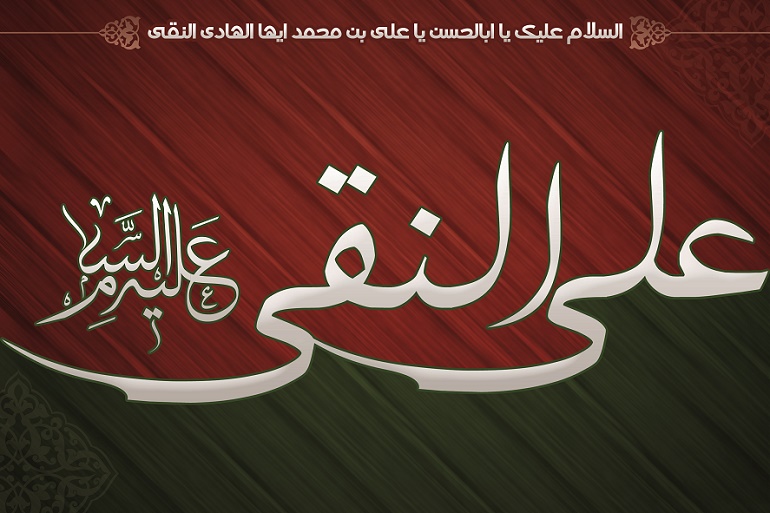Imam Hadi (a.s) was contemporary to Mutawakkil one of cruelest Abbasid caliphs. In those hard times he led the comunity to truth.

ʾAbu l-Ḥasan ʿAlī b. Muḥammad b. ʿAlī b. Mūsā, (b. 212/828 - d. 254/868) (Arabic:ابوالحسن علي بن محمد بن علي بن موسی) was the son of Imam al-Jawad (a.s) and he was the tenth of the twelve Shi'a Imams. He is also known as al-Naqī (Arabic: النقي, the pure) and al-Hādī (Arabic: الهادي, the guide). He was the Imam between 220/835 and 254/868 for a period of thirty-four years.[1]
Many years of the imamate of Imam al-Hadi (a.s) took place in Samarra under direct surveillance of the rulers of his time.[2] His imamate was contemporary with the rule of some Abbasid caliphs including al-Mutawakkil al-'Abbasi the cruelest of them all.[3]
His shrine is in Samarra. The dome and some minarets of his shrine were destroyed by bombing in 2006; and again, in 2008 other minarets of the shrine were also destroyed by another bombing.
Different hadiths are narrated from Imam al-Hadi (a) about ideological issues, interpretation of the Qur'an, fiqh, and ethics. Al-Ziyarah al-Jami'a al-Kabira which includes Shi'a ideological concepts about the Imams, is narrated from Imam al-Hadi (a.s).[4]
During his imamate, Imam al-Hadi (a) educated students and managed Shi'a affairs. Some of his students and companions included: 'Abd al-'Azim al-Hasani, 'Uthman b. Sa'id, Ayyub b. Nuh, al-Hasan b. Rashid and al-Hasan al-Utrush.[5]
According to the narrations of al-Shaykh al-Mufid and others, Imam al-Hadi (a.s) was martyred in the month of Rajab 254/July, 868 after twenty years and nine months of being held in Samarra[6]. Some sources have mentioned the date of his martyrdom as Rajab 3/July 2,[7], while others have mentioned it being the twenty-fifth or twenty-sixth of Jumada l-Thania (25th or 26th June)[8], during the rule of al-Mu'tazz, the thirteenth Abbasid caliph.[9]
Footenotes:
1. Al-Mufid, al-Irshad, p. 635.
2. Al-Mas'udi, Ithbat al-Wasiyya, p. 200.
3. Abu l-Faraj Isfahani, Maqatil al-talibiyyin, p. 478.
4. Mafatih al-Jinan, section of Ziarat.
5. Al-Nuri, Mustadrak al-wasa'il, vol. 17, p. 321. Al-Tusi, Rijal, pp. 389,401. Al-Tusi, al-Ghiba, vol. 1, p. 349. Al-Tusi, al-Ghiba, vol. 1, p. 350. Al-Tusi, Rijal, p. 385. Al-Sayyid al-Murtada, Masa'il al-nasiriyya, p. 63.
6. Al-Mufid, al-Irshad, p. 649.
7. Al-Nawbakhti, Firaq al-Shi'a, p. 134.
8. Al-Irbili, Kashf al-ghumma, vol. 4, p. 7.
9. http://en.wikishia.net/view/Imam_'Ali_b._Muhammad_al-Hadi_%28a%29
http://fa.wikishia.net/view/%D8%A7%D9%85%D8%A7%D9%85_%D9%87%D8%A7%D8%AF%... %D9%85



